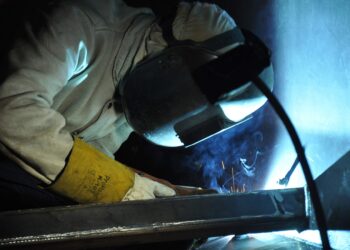The first water quality testers at Warsaw Waterworks are the fish and mussels located in its facilities. These organisms are used for water quality control as part of biomonitoring.
What is Biomonitoring?
Biomonitoring, in the broadest sense, involves the observation and assessment of the condition and changes occurring in ecosystems. More specifically, it refers to activities aimed at evaluating environmental conditions, particularly the level of air and water pollution, using bioindicators—organisms that are especially sensitive to the presence of certain substances in their surroundings.
Why is Biomonitoring Used?
Warsaw Waterworks employs biomonitoring to enhance the safety of the water treatment process. The mussels used, from the species Unio tumidus (swollen river mussel), are highly sensitive to water pollution and serve as quality monitors in the Vistula River and Zegrze Reservoir. These mussels can live for several decades, but after three months of service at Warsaw Waterworks, they are returned to their original habitat—the lakes of Greater Poland.
How Do the Mussels Work?
After being collected, the mussels are taken to a laboratory, where they undergo a selection and acclimatization process for at least two weeks. After this period, they are properly prepared for their role and calibrated within the biomonitoring system. At this stage, their natural shell opening is determined—this is how mussels feed on organic matter in the water. This allows researchers to assess whether their behavior and life activity remain normal during subsequent observations.
Next, the mussels are equipped with special sensors and placed in a specially designed flow-through tank with water drawn from the Vistula River (for the „Gruba Kaśka” well) or from the Zegrze Reservoir (at the Northern Plant in Wieliszew). The mussels are connected to a system controller, which transmits data to a dedicated computer. The degree of shell opening is continuously recorded. If the water quality deteriorates, the mussels may close their shells, isolating themselves from the environment, which immediately triggers an alarm. This signal prompts staff to conduct specific laboratory tests.
Not Only Mussels Test the Water
In addition to mussels, selected species of freshwater fish, such as vimba bream (Vimba vimba), barbel (Barbus barbus), and rudd (Scardinius erythrophthalmus), also serve as water quality testers at Warsaw Waterworks. These organisms are placed in flow-through aquariums with water drawn either by infiltration (from beneath the Vistula riverbed) or directly from the river’s surface. Their behavior is observed at set intervals by trained staff. To aid this process, industrial camera systems transmit real-time footage to the control room at the Wieliszew facility. Any unusual fish behavior is recorded, thoroughly analyzed, and serves as a signal to initiate relevant laboratory tests.
Regardless of the assistance from these organisms, the quality of the water supplied daily to nearly 2.5 million residents of Warsaw and surrounding areas is controlled by an experienced team of laboratory technicians using advanced analytical equipment. Water quality is also monitored through electronic devices operating in an online system, continuously displaying key parameters at various stages of the treatment process. In total, more than seventy indicators are analyzed, ensuring that Warsaw’s tap water meets strict European standards and is on par with the water consumed daily in other European capitals.






